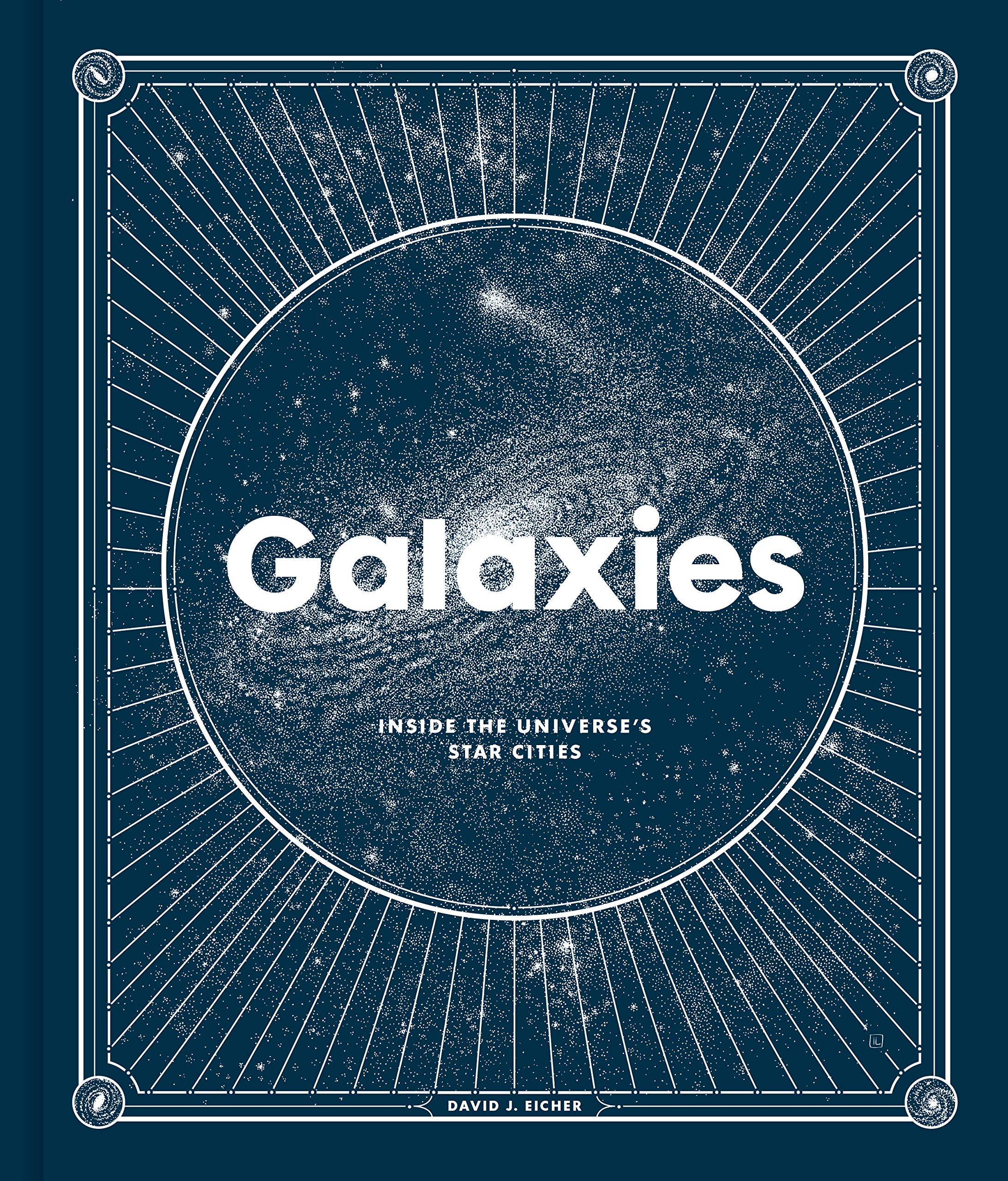Book Review: Galaxies: Inside the Universe’s Star Cities
September 2020 :
Galaxies: Inside the Universe’s Star Cities, by David J. Eicher, illustrated by Irene Laschi, New York: Clarkson Potter, 2020, ISBN 978-0-525--57431-6, hardbound, $30.00 US
Reviewed by Francine Jackson
 This is a beautiful book: The images of galaxies are unprecedented, showing the true beauty of our universe. The illustrations, also, are incredible, often complimenting the text as not often seen in books such as this. Even the cover is a thing of beauty, compared to the normal hard cover of a nonfiction book.
This is a beautiful book: The images of galaxies are unprecedented, showing the true beauty of our universe. The illustrations, also, are incredible, often complimenting the text as not often seen in books such as this. Even the cover is a thing of beauty, compared to the normal hard cover of a nonfiction book.
The author begins with a “history” of galaxies, taking us back to 1923, and the events that occurred around Los Angeles at that time: Amelia Earhart was taking flying lessons; Walt Disney arrived with nothing in his pocket; Robert Millican, a physicist at the California Institute of Technology, won a Noble prize for both measuring proton and electron charge and work on the photoelectric effect; and astronomer Edwin Hubble, using measurements determined by Henrietta Swan Leavitt, realized that a puffy nebula in the constellation Andromeda was actually a galaxy, like our own. This changed the face of the universe, from our single Milky Way to one of an untold size.
From there we go outward to the Local Group, the band of galaxies near and dear to the Milky Way, Although there are a few that rival ours in size, such as Andromeda and M33, many of them are rather small, considered more “satellites” or “dwarf” galaxies. Counted among them are our two naked-eye southern companions, the Large and Small Magellanic Clouds, although the names of the close to four dozen others don’t roll off our tongues as easily, such as the Canis Major Dwarf, Barnard’s Galaxy, and IC 10.
And, then it’s on to other clusters or superclusters of galaxies, most notably the Virgo supercluster, containing, with M87, possibly 1,500 separate galaxies. M87, of course, was in the news recently as having a “picture” of its massive black hole imaged, a body millions of time more massive than the Sun. M87 is also home to 12,000 globular clusters.
But, there is much more, as we are shown galaxies shaped like rings, galaxies in a “train wreck” - is this the future of our eventual merger with Andromeda? - galaxies appearing to be symbiotically related, and others just too unique to be imagined, yet, here they are, a part of our universe.
The only glitch that seemed to come up is that, when mentioning certain characteristics of galaxies, often that section ends with a list of similar ones, including those in catalogs not very common to the average reader, such as the Arp and ESO. But, that’s okay. There are sure to be many general readers who will pass over much of the words and enjoy the absolute beauty of the incredible, varied galaxies just overhead. Although many can never be seen visually, to know they are there, such wondrous creations, should be reason enough to want to learn more about them. And, in Galaxies, you will.



